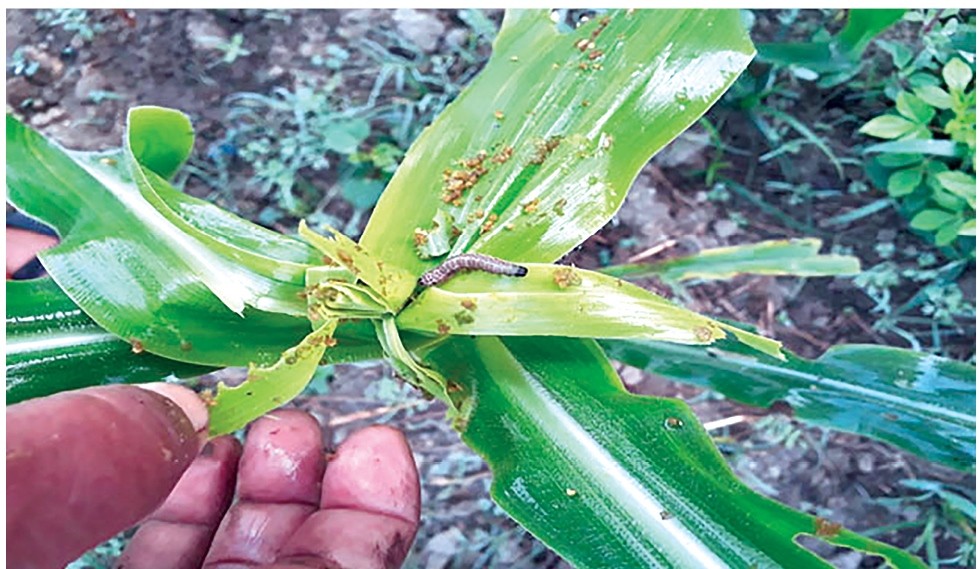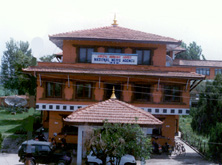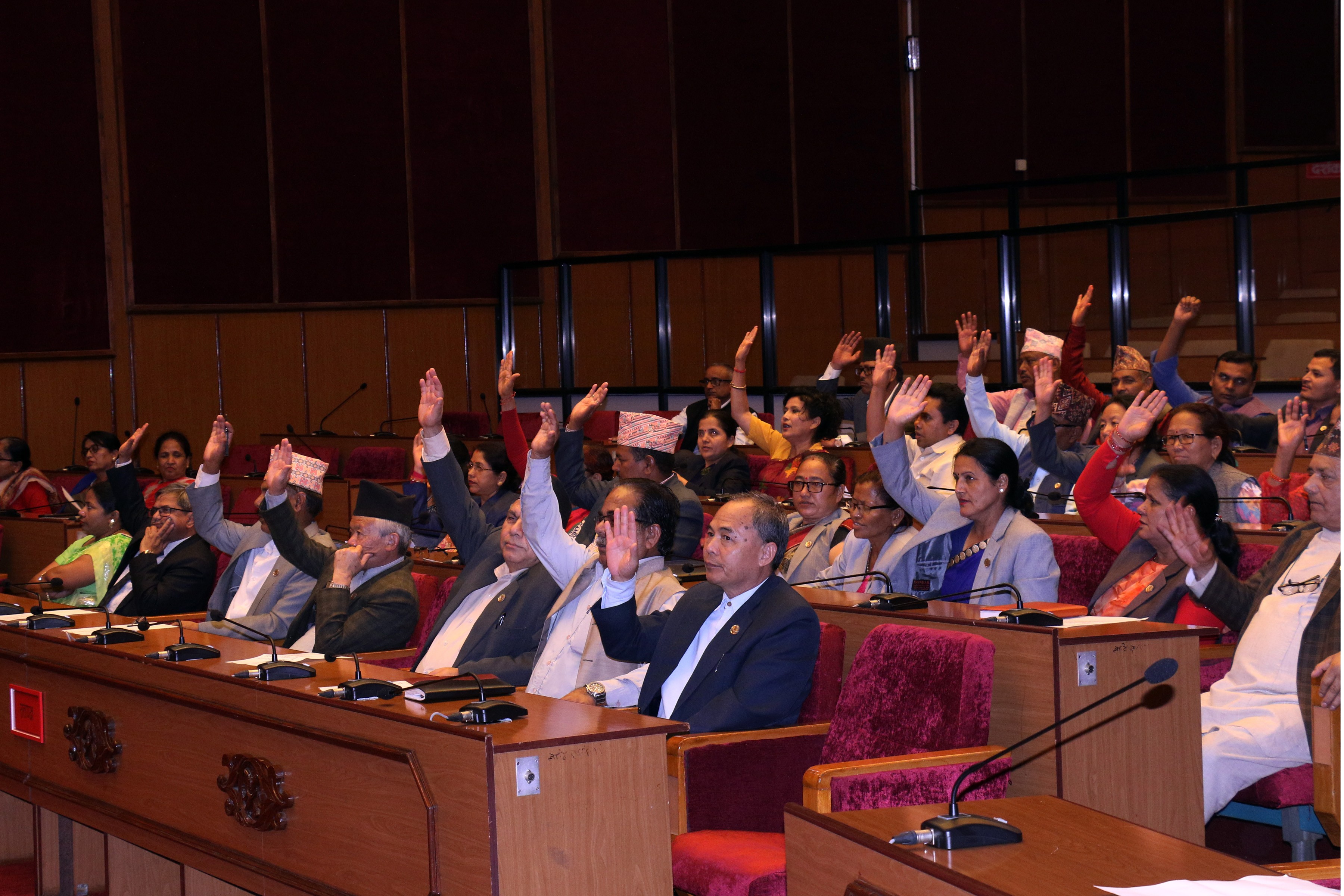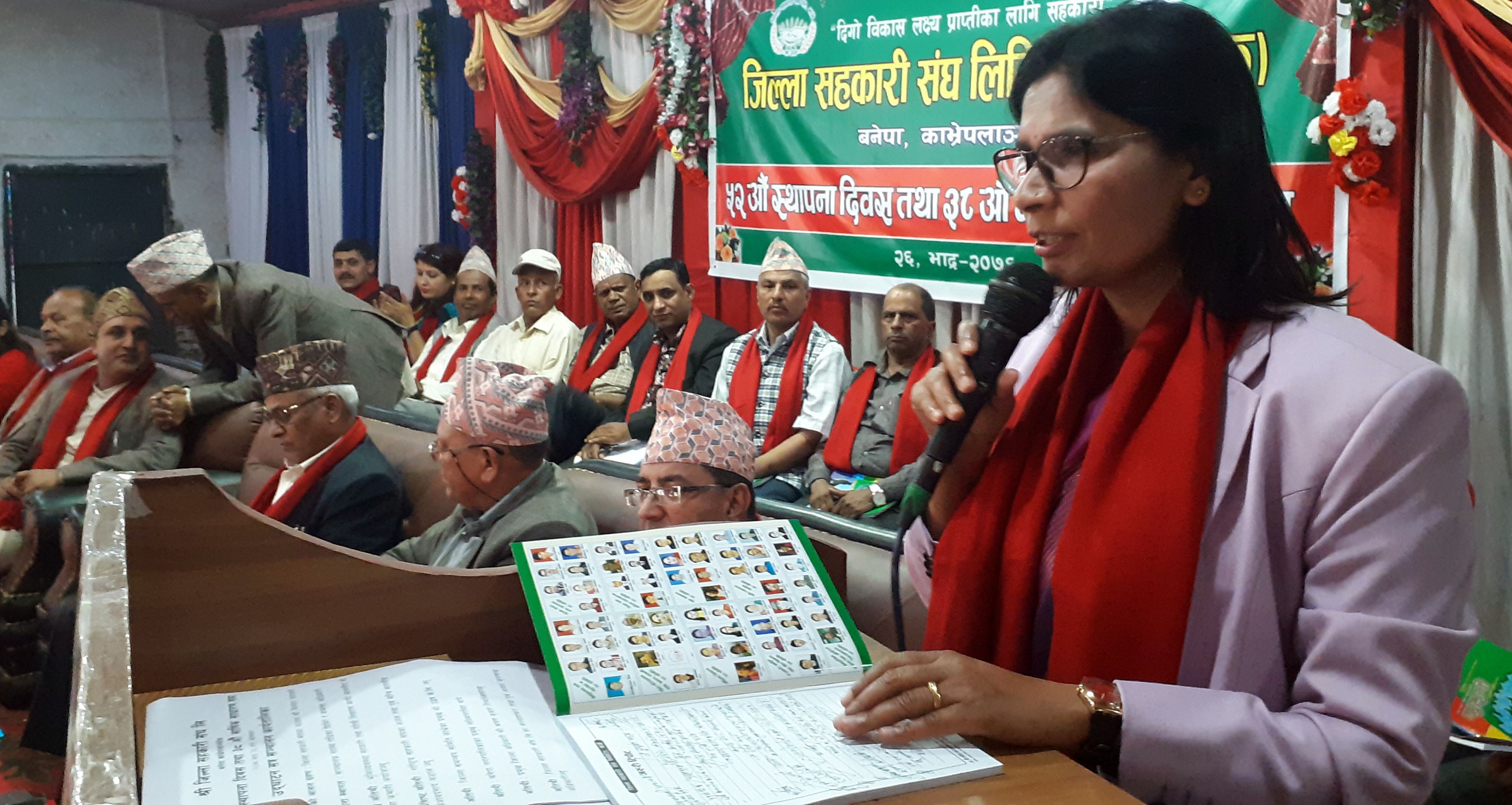Fall Armyworm: a menace for Nepali farmers

Sabina Poudel
An invasive pest, Fall armyworm (FAW) (Spodoptera frugiperda) was first recorded in Nepal from Nawalpur district which are supposed to have come from India. After the first report of the invasion of this pest in Asia was in July, 2018, from Karnataka State of India. National Plant Protection Organisation (NPPO) Nepal and other research organisations were then alerted on the surveillance, monitoring and detection of this worm.
Sujata Poudel, an agriculture scientist at Nepal Agriculture Research Council, said, “Infestation of Fall Armyworm was noticed first in Nawalpur district of Nepal at the time of field visit and further investigation like suspected sample collection and its culture in NARC laboratory was conducted thereafter. Those samples were sent for the molecular identification to National Bureau of Agricultural Insect Resources (NBAIR), Bangaluru, India which confirmed to be Spodoptera frugiperda on 9th of Aug, 2019.
According to pest experts, Fall Armyworm damages 80 kinds of crops including maize. This catastrophic pest has started affecting maize crops at different growth stages commencing from early vegetative growth to physiological maturity.
Dhurba pokhrel, a local maize grower of nawalpur district said that it can shred young plants and can also damage leaves, giving them a ragged and torn appearance. “The pest feeds inside whorls and also on developing kernels destroying silks, developing tassels and yield”, he added.
The damages caused by fall armyworm had also been reported on potato fields in Chitwan district. Meena poudel, a local farmer of Bharatpur said that fall armyworm had adversely affected her potato plants, cutting the young plants at the points just above the soil surface. “Potato growers should be aware of this noxious pest and take protection measures”, she added.
An adult FAW female moth is a strong flyer with dark brown to straw color and can travel up to 100 km in one night. She can lay 100-200 eggs on the surface of lower leaves and are covered in protective scales rubbed off from the moths’ abdomen. The colour of eggs changes from pale green to golden yellow and turns black before hatching.
Larvae begin to feed on the leaves after hatching. Its color ranges from light green to dark brown with longitudinal stripes and characterised by an inverted Y-shape in yellow on the head, black dorsal pinaculae with long primary and four black spots arranged in a square on the last abdominal segment. They are at their most damaging stage when they are 3-4 cm long. Pupas are shiny brown in colour as a loose cocoon in an earthen cell.
Direct control methods like spraying can be done by using recommended insecticides like cypermethrin, deltamethrin, lambda-cyhalothrin, permethrin, and chorpyrifos, etc. Spraying is most effective in day light: larvas are active during the night. Applying pesticides is effective when the larvas are young because matured larvas usually hide inside a cob.
There are also non-chemical methods to control the pest. Virus-based insecticides, which are mostly in the Baculovirus group, such as the multiple nucleopolyhedrovirus can be useful for management of this worm. Botanical spray like azadiractin, pyrethrin, Oxymatrine and matrine can also be used for prevention.
Breeding programmes have developed field crop varieties with improved resistance against FAW. Introduction of the Parasitoids like Telenomusremus could be done for biological control.
Cultural practices like early planting and early maturing varieties could be employed because early harvest allows many corn ears to escape higher armyworm densities developed later in the season. Clean cultivation and weeding are highly recommended. Application of the locally available materials like charcoal, ash, detergents, paraffin and engine oil can also be done.
Moreover, Integrated Pest Management (IPM) system can be a good option for its management. The International Maize and Wheat Improvement Center (CIMMYT) Nepal is already evaluating the efficacy of push-pull cropping systems to control FAW. It is one of the effective biological strategy for agricultural pest control. Desmodium plants and Napier grass are two different crops involved in push-pull cropping system. Desmodium plants, planted between the rows of maize releases the volatile chemicals which effectively repulse the FAW moths (push), while Napier grass encompassing throughout the maize plants produces the gaseous compound attracting the female moths (pull).
Location specific study of temperature and regimes is relevant so as to control the FAW infestation since precipitation and temperature regimes of Nepal was found to be suitable for the introduction, establishment and spread of this pest. Farmer specific awareness programmes should be conducted by mobilising extension officers throughout country. This worm can pose a serious threat to food security if serious action is not taken on time in Nepal. The authorities should take immediate action to avoid massive loss of yields in future.
Recent News

Do not make expressions casting dout on election: EC
14 Apr, 2022
CM Bhatta says may New Year 2079 BS inspire positive thinking
14 Apr, 2022
Three new cases, 44 recoveries in 24 hours
14 Apr, 2022
689 climbers of 84 teams so far acquire permits for climbing various peaks this spring season
14 Apr, 2022
How the rising cost of living crisis is impacting Nepal
14 Apr, 2022
US military confirms an interstellar meteor collided with Earth
14 Apr, 2022
Valneva Covid vaccine approved for use in UK
14 Apr, 2022
Chair Prachanda highlights need of unity among Maoist, Communist forces
14 Apr, 2022
Ranbir Kapoor and Alia Bhatt: Bollywood toasts star couple on wedding
14 Apr, 2022
President Bhandari confers decorations (Photo Feature)
14 Apr, 2022











